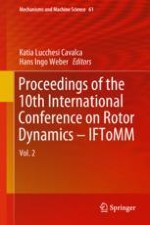IFToMM conferences have a history of success due to the various advances achieved in the field of rotor dynamics over the past three decades. These meetings have since become a leading global event, bringing together specialists from industry and academia to promote the exchange of knowledge, ideas, and information on the latest developments in the dynamics of rotating machinery.
The scope of the conference is broad, including e.g. active components and vibration control, balancing, bearings, condition monitoring, dynamic analysis and stability, wind turbines and generators, electromechanical interactions in rotor dynamics and turbochargers.
The proceedings are divided into four volumes. This second volume covers the following main topics: condition monitoring, fault diagnostics and prognostics; modal testing and identification; parametric and self-excitation in rotor dynamics; uncertainties, reliability and life predictions of rotating machinery; and torsional vibrations and geared systems dynamics.
